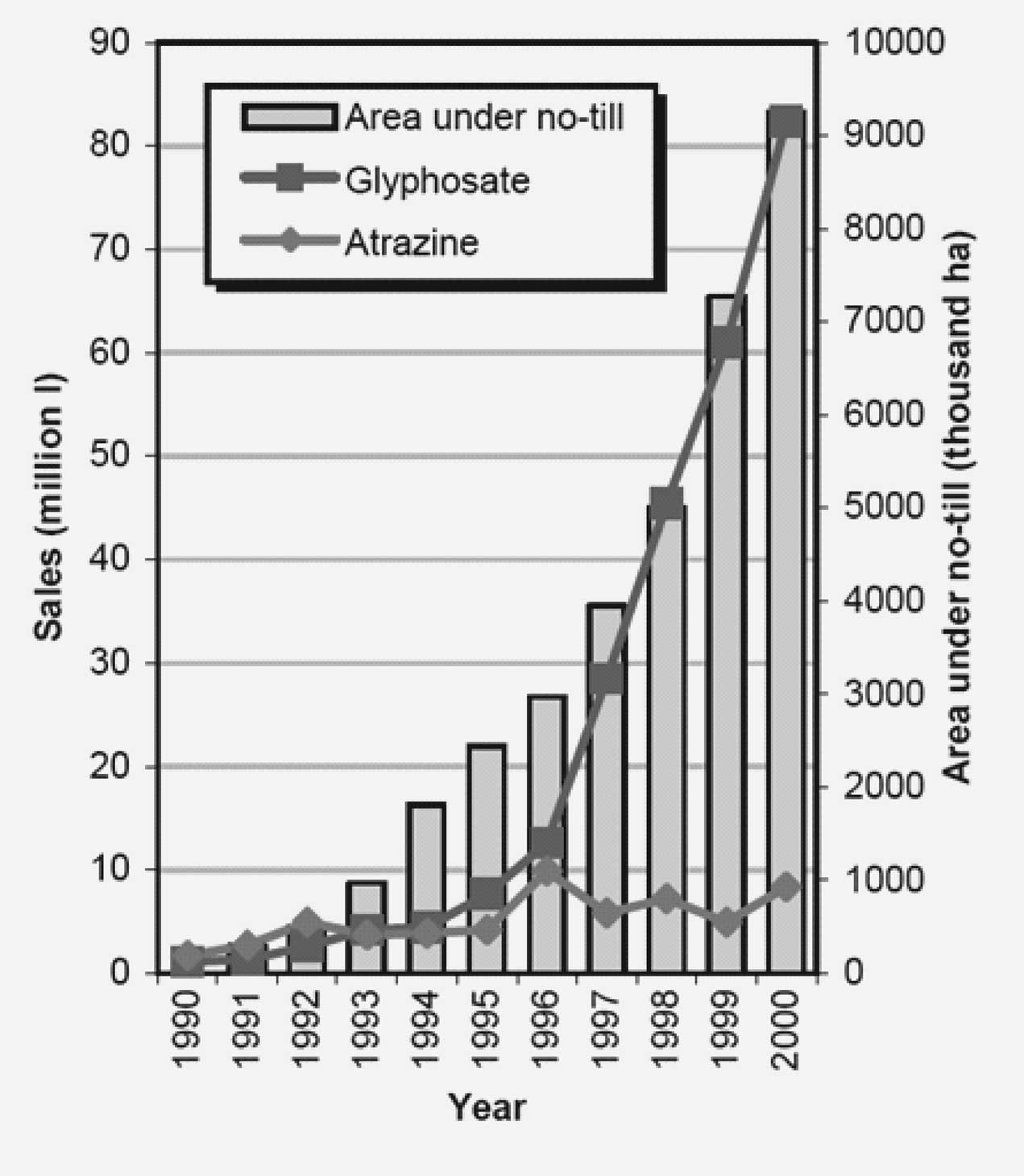Argentina is the second leading producer of transgenic crops,
with 18 million ha planted. This represents more than 5.5%
of Argentina’s area, larger than all of Nicaragua. The development
of transgenics in Argentina is inseparable from the
expansion of the soybean crop. Today Argentina plants 15
million ha of transgenic soybean, mainly Roundup® resistant
(RR), producing 38.3 million tonnes (Altieri and Pengue,
2005). The low cost of the herbicide, the possibility of retaining
and reusing the seed, the lower consumption of energy,
the simplicity of the methods of application, and a major publicity
campaign made this technological package attractive
to many producers (Trigo and Cap, 2003; Qaim and Traxler,
2005; Souza, 2004). It is estimated that from 1996 to 2001,
the technology of RR soybean generated profits of US$5.2
billion, 80% of it captured by the producers and the rest by
the supplier corporations (Trigo et al., 2002). In 2002, soybean
accounted for 20% of Argentina’s export revenues. This technology has caused major changes in the environment
and in Argentina society. The economic benefits
have been accompanied by social changes such as migration,
concentration of landholdings and agribusinesses, and
the loss of food sovereignty (Souza, 2004; Altieri and Pengue,
2005; Pengue, 2005). For example, at the same time as the
production area of RR soybean tripled, some 60,000 units engaged
in the production of food crops were abandoned. The
replacement of traditional activities such as cattle-raising,
vegetable production, fruit production, dairy production, and production of other cereal grains (maize and wheat) by the
soybean crop is resulting in a lower supply of these products
in the market, with the consequent rise in prices and less
access for the more economically vulnerable sectors (Alteri
and Pengue, 2005; Souza, 2004). From 1998 to 2002, 25%
of the country’s farms were lost, most of them small producers
(Altieri and Pengue, 2005, 2006). From 1992 to 1999 the
number of farms in the Pampas was reduced from 170,000 to
116,000, while the average size of a farm increased from 243
to 538 ha in 2003 (Pengue, 2005). Transgenic soybean has had environmental benefits related
to the practice of zero-tillage (Trigo and Cap, 2003; Qaim and
Traxler, 2005). These effects are overshadowed by the dramatic
increase in the use of herbicides (mainly glyphosate) (Trigo and
Cap, 2003) (see Figure); the appearance of glyphosate-tolerant
weeds (Papa, 2000); the increase in the use of synthetic fertilizers;
the depletion of soil nutrients; the degradation of the soil
structure; and the loss of habitat and biodiversity (Altieri and
Pengue, 2005; Pengue, 2005). Soybean expansion has even
occurred on non-farm lands, not only in the Pampas but also
in susceptible and high-biodiversity ecoregions such as the
Yungas, the Gran Chaco, and the Mesopotamian Forest (Pengue,
2005). Since the introduction of transgenic soybean, 5.3
million ha of non-farm lands have been converted to soybean
production, and the rate of conversion of forest to agriculture
is three to six times the global average (Jason, 2004). Glyphosate, the active ingredient in Roundup ®, is a broadspectrum herbicide classified as low (category IV) or medium (category III) toxicity. Nonetheless, there is ample evidence |
that glyphosate is not innocuous, as was once thought (see figure below). Most toxicological studies are done exclusively with the active ingredient (i.e. glyphosate) and not with the commercial formulations that contain the so-called inert ingredients. Roundup® contains glyphosate and the surfactant polyoxy-ethyleneamine, or POEA, which is three times more toxic than glyphosate alone (USEPA, 2002). On the whole, transgenic soybean has been an economic success in Argentina. Nonetheless, it has not helped meet the goals of reducing hunger, poverty or inequality, nor has it helped increase sustainability in Argentina.
Studies that show negative effects of glyphosate or
Roundup®: |
